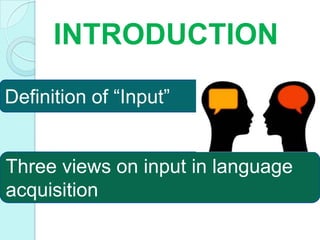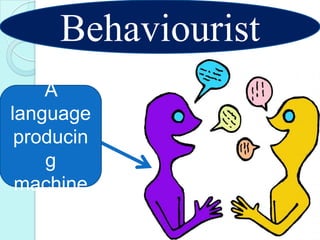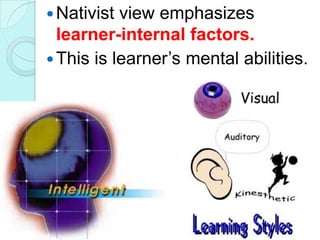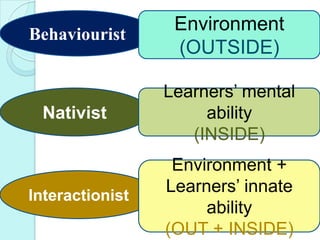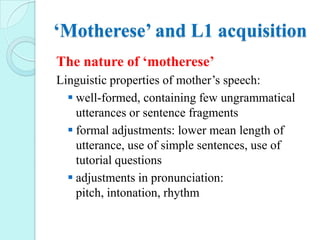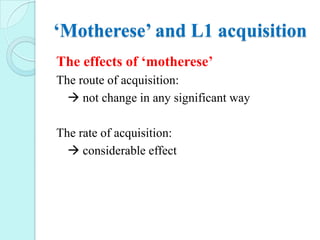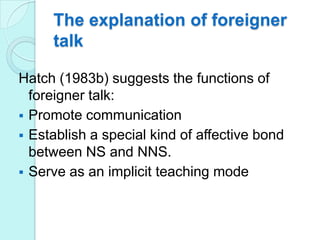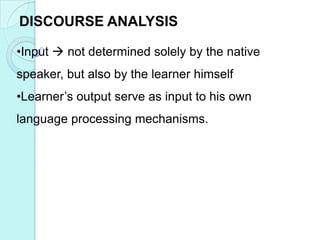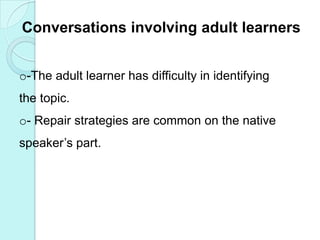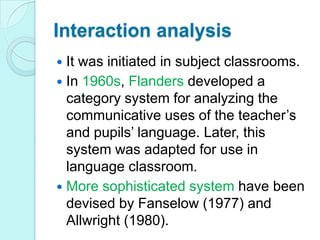The document discusses input, interaction, and second language acquisition from multiple perspectives. It begins by defining input and noting three views on input in language acquisition: behaviourist, nativist, and interactionist. It then examines foreigner talk studies, discourse analysis, and input/interaction in classroom settings. Research on motherese and first language acquisition is also summarized. The document provides an overview of different frameworks for analyzing classroom interaction, including interaction analysis, classroom process research, and teacher talk analyses.

